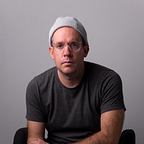The Tools of Creativity
Just like McLuhan argues “the medium is the message”, and shapes the society we live in, our tools affects how we approach problems, how we navigate challenges, and depending on their feature set, they have the power to either amplify or diminish our creativity.
Full reading experience posted here: guglieri.com/tools
Are the tools you use limiting your creativity or empowering you to develop new ideas?
Nobody likes to hear that their creative freedom is being limited but it’s unquestionable that our tools, in some way or another, have a role in how we express our ideas.
Take for instance Sketch. Sketch and XD came out to improve the most lacking aspects of the design process when photoshop was king (i.e. performance, templates, artboards, file sizes, specs creation, shared symbols, collaboration and prototyping). They deliberately disregarded the photo retouch aspect of photoshop and focused on UI and basic tools for vector illustration. How has that affected the industry’s output? Certain things that were extremely easy to do in photoshop, like adjusting hues, transforming or compositing images and text together are not that easy anymore as you have to jump from one app to another. No big deal right? Yet by favoring one workflow vs another, Sketch is somehow influencing creators as it promotes certain actions vs others.
Let’s look at it from the other side, let’s talk about Photoshop. To be honest, it’s hard to tell what Photoshop is for anymore but maybe that’s where its charm resides. In comparison with other tools, if you are using photoshop to design a mobile app or a website you have a whole range of effects available and compositing tools and illustration capabilities not available to you in Sketch. In the past I’ve created websites and concepts for games almost as if I was painting them.
For instance one of my personal challenges when designing the 2012 Google Ramayana website was stay away from gradients, dropshadows and any other effects I couldn’t do just using brushes.
Another quick example is this pitch that I put together for a game for the NBC Show “The Voice” around the same time. Drawing this comp in sketch would have been challenging…but also for what it’s worth, doing it in photoshop didn’t make the job of any developer easier either.
The tools we use influence our craft so much in some cases that you can actually tell if a design was done in Photoshop vs Sketch. I’m not saying that you couldn’t create exactly the same design in both tools but by using one vs another you are able to access certain features more easily than others. For instance when you see certain textures, patterns, or compositions it’s only fair to guess it was created in a tool like Photoshop.
This is not a discussion limited to Photoshop and Sketch either. Other apps are making moves now from different angles. Adobe XD comes with basic prototyping capabilities, Invision is making the reverse move now by trying to get into Design and Framer went from a hardcore prototyping tool to a design tool. Everybody wants a piece of this pie and they all have their angle that without a doubt will influence designers in developing new concepts. Will we be able to tell if something was designed in Invision vs Framer? (pills buttons everywhere?).
How can we get out of that box?
The tools we have are always evolving but not necessarily at the speed or in the direction we need them too. If let’s say, I’m working on the future of an OS and need to come up with a new approach to UI design… will Sketch’s “background blur + noise effect” be my solution? Will “bevel and emboss” in Photoshop help me achieve something new? Is that as far as I should aim? Probably not. The reality of our tools is that they are mostly reactive to the external demand instead of proactive and forward thinking. For example, designers were excited about smoother rounded corners when Apple came up with them. Therefore you can now create them via a checkbox on Sketch. After all, the tail that follows innovation is always longer than its head.
What’s my approach?
I sadly don’t have a silver bullet but I will share with you what I have been trying to do and at what degree it has been working out for me.
Farewell dear you. Detach yourself from the tool you are using. If it helps, use a new tool that makes things a bit more difficult and forces you to avoid easy go-to effects.
Oh Not Again! Be aware of your own tricks. If you find yourself about to make yet another pill shaped button stop right there, you have done that before, your client may not want to be another one in the lot, give them something new.
Sketch it up! Use your digital tools for executing, not for coming up with a concept. I always try to stretch the initial sketching phase of a project to avoid feeling limited or being influenced by a specific tool set. By brainstorming and discussing ideas in an abstract manner you may avoid falling back on your old ways.
While it’s hard to detach yourself from the tools we use everyday, it’s important to remember that our tools are ultimately worth nothing without our personal touch.
When evaluating what tools are best for your needs remember your ideas should ultimately dictate the tools required to execute them, the opposite will always lead to mediocre results.
Thanks for reading.
Claudio
